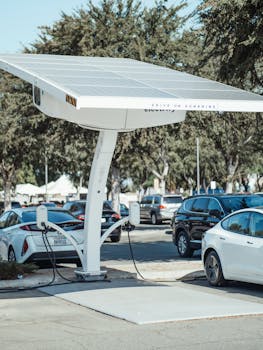
**
Volvo Cars, the Swedish luxury automaker known for its safety features and sleek designs, recently reported a significant setback, revealing a substantial decline in profitability. The company cited a confluence of factors contributing to this billion-dollar blow, primarily focusing on the impact of US tariffs and delays in its electric vehicle (EV) strategy. This article delves into the specifics of Volvo's struggles, analyzing the challenges posed by global trade tensions and the rapidly evolving electric car market.
The Double Whammy: US Tariffs and EV Transition Woes
Volvo's financial woes aren't a result of a single issue but rather a perfect storm of external and internal pressures. The imposition of US tariffs on imported vehicles significantly impacted Volvo's bottom line. These tariffs, implemented as part of a broader trade war, increased the cost of exporting vehicles to the crucial US market, impacting profitability and market competitiveness. This, combined with delays in their planned EV rollout, created a double whammy that significantly hampered their progress.
The High Cost of Tariffs: Impact on US Sales
The US market represents a vital sales region for Volvo. The tariffs imposed raised the price of Volvo vehicles sold in the US, making them less competitive against domestically produced vehicles and other imported brands that didn't face the same tariffs. This price increase led to a decline in sales volume, directly impacting Volvo's revenue and profitability. Analysts estimate the tariffs contributed to a significant portion of the overall loss.
- Reduced Sales Volume: Higher prices led to lower consumer demand.
- Price Competitiveness: Volvo struggled to match the pricing of competitors.
- Market Share Erosion: The company lost ground to rivals in the US luxury car market.
EV Transition Hiccups: Delayed Rollout and Market Competition
Volvo's ambitious plan to transition to a fully electric vehicle lineup by 2030 faced several setbacks. Delays in the development and production of new EV models, combined with fierce competition in the burgeoning EV market, significantly impacted the company's ability to capitalize on the growing demand for electric cars.
- Production Bottlenecks: Supply chain issues and manufacturing challenges contributed to production delays.
- Software Glitches: Reports surfaced about software problems affecting some of their early EV models.
- Charging Infrastructure Challenges: The lack of widespread charging infrastructure in some key markets hindered consumer adoption.
These delays allowed competitors like Tesla, Rivian, and even established legacy automakers with robust EV offerings, to gain a significant advantage in the market. Volvo's slower-than-anticipated EV rollout lost them valuable market share and revenue opportunities.
Beyond the Headlines: A Deeper Dive into Volvo's Challenges
While US tariffs and EV transition delays are the most prominent factors, other underlying issues contributed to Volvo's financial struggles. These include:
Supply Chain Disruptions: Global Impact
Like many automotive manufacturers, Volvo faced significant challenges due to global supply chain disruptions. The shortage of semiconductors and other critical components hampered production, leading to decreased output and impacting the company's ability to meet customer demand. This further aggravated the financial difficulties caused by the other factors.
Increased Raw Material Costs: Inflationary Pressures
The rising costs of raw materials, especially steel and aluminum, significantly impacted Volvo's manufacturing costs. These inflationary pressures squeezed profit margins and added another layer of complexity to the company's financial challenges. The company is not alone in facing this global challenge, but it further exacerbates its existing vulnerabilities.
Strategic Adjustments: A Necessary Pivot
In response to these challenges, Volvo is undertaking strategic adjustments to its business model and operations. These include:
- Accelerated EV Development: Volvo is investing heavily in accelerating its EV development and production to catch up with its competitors.
- Supply Chain Diversification: The company is working to diversify its supply chain to mitigate the risk of future disruptions.
- Cost Optimization Measures: Volvo is implementing cost-cutting measures to improve its profitability.
Looking Ahead: Volvo's Road to Recovery
Volvo's billion-dollar setback is a significant blow, but it's not necessarily a death knell. The company has a strong brand reputation, a loyal customer base, and a clear commitment to its ambitious electrification strategy. Successfully navigating the challenges ahead requires a multi-pronged approach focused on:
- Accelerating EV Production: Rapidly increasing the production and availability of competitive electric vehicles is crucial.
- Strengthening the Supply Chain: A resilient and diversified supply chain is essential to mitigate future disruptions.
- Improving Cost Efficiency: Streamlining operations and optimizing costs will enhance profitability.
- Aggressive Marketing and Sales Strategies: Rebuilding market share will require a renewed focus on marketing and sales efforts.
The coming years will be critical for Volvo. The success of its recovery will depend on its ability to effectively address the challenges it faces and capitalize on the opportunities presented by the rapidly evolving automotive landscape. The company’s ability to adapt and innovate will determine its ultimate success in the fiercely competitive global automotive market. The long-term outlook for Volvo hinges on the successful execution of its strategic adjustments, especially its transition to electric vehicles and its ability to regain its lost market share. The situation highlights the complexities of operating in a global market characterized by trade wars, supply chain disruptions, and rapid technological advancements.




















